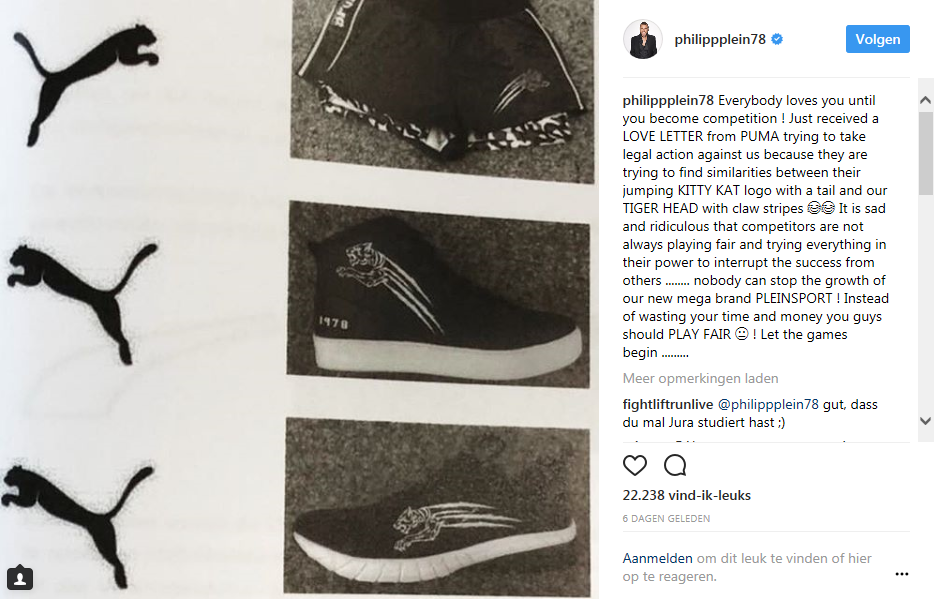

Don’t be a puma, be a tiger
The German fashion designer Philipp Plein knows all about it. Plein posted on Instagram that he received a ‘love letter’ from German sportswear giant Puma. Plein is known for the use of skull images and diamanté studded designs, and collaborated with celebrities such as Snoop Dogg and Lindsay Lohan.
According to Plein, Puma threatens to take legal actions due to similarities between the Puma-logo and the image of a leaping tiger with claw stripes that Plein uses on his products. The question is whether the claims of Puma have merit: does Philipp Plein infringe Puma’s trademark rights?
Likelihood of confusion
The legal criterion for comparisons such as these is whether there is a ‘likelihood of confusion’ between the two trademarks. To be more specific: will consumers believe that Plein products with the leaping tiger originate from Puma or from an undertaking that is economically linked to Puma?
Visual, aural and conceptual comparison
To determine whether there is a likelihood of confusion, the signs are compared on visual, aural and conceptual aspects. In this case, visually both signs comprise a feline in a leaping position. On the other hand there are differences as well: the Puma logo is solidly coloured and the depicted animal has a stand up tail, whereas the Plein tiger has an open structure and comprises claw stripes.
An aural comparison cannot be made in this case because both signs do not include verbal elements. Conceptually, there are similarities as well, because both signs comprise a leaping catlike.
Well-known trademark
In the comparison at issue, another aspect must be taken into account: Puma can be considered as a well-known trademark. This means that the Puma trademark has an enhanced distinctive character. As a result, the scope of protection of the Puma mark is broader compared to other trademarks that are not well known. This means that Plein might still infringe the Puma trademark, even if consumers are well aware that the Plein products with the tiger do not originate from Puma. Puma can argue that Plein takes unfair advantage of the reputation of Puma. The sportswear giant can also claim that Plein products are detrimental to the distinctive character of the Puma trademark. After all, the more third parties use trademarks that includes felines, the less the Puma trademark will be able to fulfil its primary function, which is to indicate the origin of a product.
So… who is right?
Puma has objected to other trademarks with the image of a cat in the past and has been successful in several cases, although other cases were lost. Eventually a judge has to decide whether Plein infringes Puma’s trademark rights.
Meanwhile, the story continues on social media. Plein has now started counteractions and offers a discount on his products for consumers who send in their used Puma shoes, which will be donated to ‘the less fortunate’ As Plein describes this matter on his Instagram: “Hunt or get hunted… BE A TIGER” (hence no Puma).

